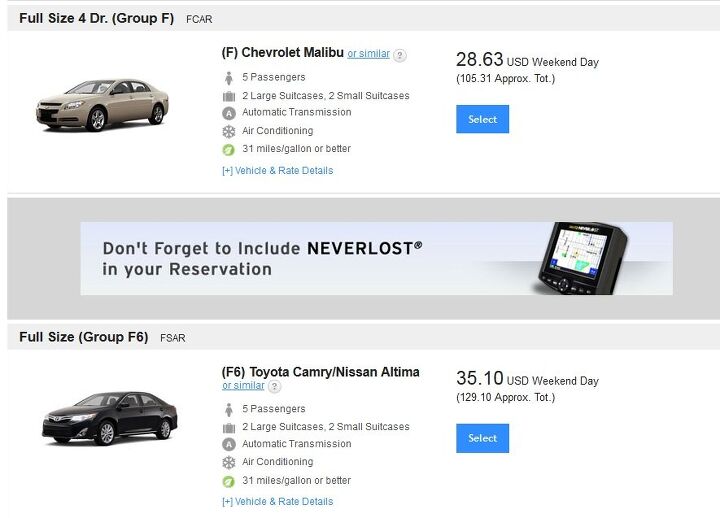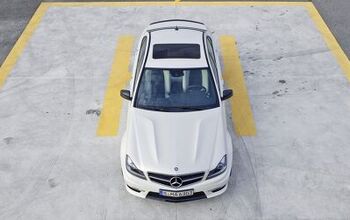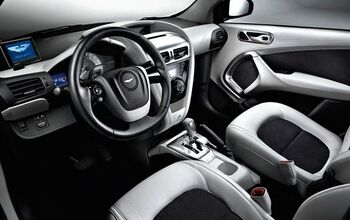What's Wrong With This Picture: But Some Are More Equal Than Others Edition

I was not exactly charmed by the current-generation Malibu when I reviewed it last summer. Its Kamm-tailed predecessor had enough virtue to face the Japanese-brand midsizers squarely on their own turf and come away with at least a respectable, stylish showing, but the current car is a retrograde step in everything from its regrettably truckish styling to its lowered-expectations driving dynamics.
Turns out that I’m not the only person, or corporation, if that’s not the same thing in 2015 anyway, who feels that way. If you’re renting at certain airports, you’ll have the chance to enjoy the Malibu at the same kind of deep discount it currently requires in order to slip the surly bonds of drab GM dealerships. I asked a rental-industry insider why that might be so.
My friend was guarded in his response to my question, which was, basically, “Why is a Camry considered so much more valuable than a Malibu as a rental car?”
“Well,” he responded, “As traditionally utilitarian cars become nicer, they are given new classes. The 200C is classed differently than the Cruze which is considered a midsize car. If you book a midsize, chances are you’ll get a Cruze but a 200C is an upsell.” Fair enough, but that doesn’t explain why there’s a specific category for “full-sized cars” that also happen to be Malibus, and that category happens to be much cheaper than regular “full-sized” cars like a Camry.
“It’s all done internally for depreciation reasons,” was his response, but when I pressed him I found out that the rental car companies are a lot more sensitive to the market’s desires than you might think. Consider, if you will, the new-generation Impala. Once upon a time, all Impalas were considered the same kind of upgrade, whether you got a leather-and-buckets LTZ or a fleet special with a bench seat and no insignia on the tail. I’ve paid about the same for both, with no warning as to what I’d get when I booked.
Nowadays, however, the Impala LTZ lives in a different category from the LS and LT. Although even the mid-grade model impressed our own Bark M. when it arrived in the fleets, if you want the Zen Impala, so to speak, you’ll pay more.
But that doesn’t answer the question of why a car that is priced heads-up against Camry and Accord finds itself heavily discounted as a one-night-stand. Maybe it’s the channel-stuffing to fleets that New GM swore off with all the conviction of David Crosby waving his hand at a proffered bottle of liquor. If the rental companies pay less, I suppose they might consider passing the savings along to me, the rental customer.
Alternately, perhaps they’re tired of people like me who view the current Malibu as the all-time rental booby prize and will therefore raise hell not to spend a weekend behind the wheel of one. With this new pricing strategy, we have a chance to put our money with our mouth is, so to speak. And who would want to put their mouth on a Malibu?

More by Jack Baruth
Latest Car Reviews
Read moreLatest Product Reviews
Read moreRecent Comments
- Honda1 Unions were needed back in the early days, not needed know. There are plenty of rules and regulations and government agencies that keep companies in line. It's just a money grad and nothing more. Fain is a punk!
- 1995 SC If the necessary number of employees vote to unionize then yes, they should be unionized. That's how it works.
- Sobhuza Trooper That Dave Thomas fella sounds like the kind of twit who is oh-so-quick to tell us how easy and fun the bus is for any and all of your personal transportation needs. The time to get to and from the bus stop is never a concern. The time waiting for the bus is never a concern. The time waiting for a connection (if there is one) is never a concern. The weather is never a concern. Whatever you might be carrying or intend to purchase is never a concern. Nope, Boo Cars! Yeah Buses! Buses rule!Needless to say, these twits don't actual take the damn bus.
- MaintenanceCosts Nobody here seems to acknowledge that there are multiple use cases for cars.Some people spend all their time driving all over the country and need every mile and minute of time savings. ICE cars are better for them right now.Some people only drive locally and fly when they travel. For them, there's probably a range number that works, and they don't really need more. For the uses for which we use our EV, that would be around 150 miles. The other thing about a low range requirement is it can make 120V charging viable. If you don't drive more than an average of about 40 miles/day, you can probably get enough electrons through a wall outlet. We spent over two years charging our Bolt only through 120V, while our house was getting rebuilt, and never had an issue.Those are extremes. There are all sorts of use cases in between, which probably represent the majority of drivers. For some users, what's needed is more range. But I think for most users, what's needed is better charging. Retrofit apartment garages like Tim's with 240V outlets at every spot. Install more L3 chargers in supermarket parking lots and alongside gas stations. Make chargers that work like Tesla Superchargers as ubiquitous as gas stations, and EV charging will not be an issue for most users.
- MaintenanceCosts I don't have an opinion on whether any one plant unionizing is the right answer, but the employees sure need to have the right to organize. Unions or the credible threat of unionization are the only thing, history has proven, that can keep employers honest. Without it, we've seen over and over, the employers have complete power over the workers and feel free to exploit the workers however they see fit. (And don't tell me "oh, the workers can just leave" - in an oligopolistic industry, working conditions quickly converge, and there's not another employer right around the corner.)






























Comments
Join the conversation
To answer the question of the higher rental price, the "F6" indication means that the Camry/Altima are meant as $4/day upgrades over "F" Malibu models. Counter Sales Reps are trained to query customers to find means of upselling. In the case of the Camry, the larger trunk would have a value for a travelling family. Salesman are targeted for the Altima's larger gas tank and longer range. Interestingly, upgrades are more likely to purchase additional services (insurance) from which rental car companies make a good deal of their profits. As to the advertised pricing, Hertz obviously over-purchased Camrys and Altimas which will be frequently substituted for Malibus at the counter negating the possible upsale at the time of rental.
since Camry does not look pretty either or drives well, i would guess that people value its reliability and that will pay more for it than for Chevy.... quite possibly Malibu is cheaper to the fleets than Camry, so thats reflected in the final pricing as well.